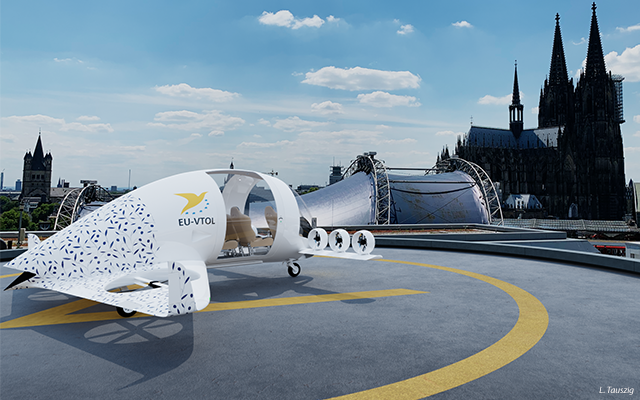 Europe is getting ready to embrace Urban Air Mobility (UAM) as a new air transport system and EASA has received a number of requests for the type certification of vertical take-off and landing (VTOL) aircraft, also referred to as Air Taxis, with the ambition to enable Urban Air Mobility or create new solutions for Regional Air Mobility.
Europe is getting ready to embrace Urban Air Mobility (UAM) as a new air transport system and EASA has received a number of requests for the type certification of vertical take-off and landing (VTOL) aircraft, also referred to as Air Taxis, with the ambition to enable Urban Air Mobility or create new solutions for Regional Air Mobility.
What is the difference between a VTOL and a helicopter?
Helicopters (also referred to as Rotorcraft) have been used in urban areas for decades and are a familiar sight to all of us. Helicopter Emergency Medical Services (HEMS) for example are a vital way of transport to quickly airlift seriously injured people.
Although both VTOL and conventional rotorcraft make use of propulsion to lift into the air, VTOLs are using more than two propulsion units, referred to as distributed propulsion. If implemented properly, distributed propulsion can increase aircraft safety by sharing critical functions among several components.
In conjunction with electric or other types of innovative propulsion, VTOLs also have the potential to reduce aviation’s environmental footprint in terms of emissions and noise. However, in order to ensure that this objective is met, the full life cycle of the product (from design to operations) needs to be taken into account, including the energy sources.
EASA: Developing technical requirements
In the absence of suitable certification specifications for the type certification of VTOLs, EASA developed a complete set of dedicated technical specifications in the form of a Special Condition for VTOL aircraft. The Special Condition addresses the unique characteristics of these products and prescribes airworthiness standards for the issuance of a type certificate to ensure that VTOLs are following necessary safety requirements. The Special Condition, published in July 2019 launched the framework for manufacturers to develop innovative VTOL.
The Agency is now in the process of creating new rules and revising existing ones to address new technologies, operational air transport concepts, flight crew and operator licensing requirements with the objective to be agile and to adapt the regulatory framework to be in line with Performance-Based Regulations principles. If you want to learn more about the Rulemaking tasks behind this work, have a look on EASA Pro:
As the EASA Executive Director, Patrick Ky has said: “We are actively engaging with the industry to develop the right technical requirements to take benefit of the new technologies bringing safety and environmental benefits to the community. The establishment of a common set of conditions for the certification of these new aircraft concepts will enable a fair competition on the European market as well as clarity for future manufacturers and their investors.”
- Visit us on EASA Pro and follow new developments on VTOL.
